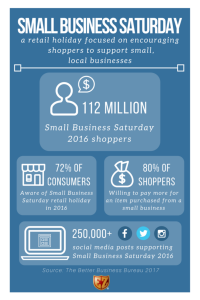Communication is critical to improving Marketing’s success rates – and not just in its messaging to consumers – but how marketing interacts with other departments.

Like any department, Marketing can’t afford to operate in a silo. Remaining in your own ‘bubble’ risks creating a disjointed marketing strategy and sending out mixed messages that doesn’t truly reflect the ethos of your business. In worse case scenarios it can also create interdepartmental resentment as others struggle to understand what exactly Marketing does to justify its budget.
A key ally for bringing Marketing closer together with other departments is by the introduction of a unified communications strategy.
Unify Your Comms
Marketing can drive this essential change within their organisation by influencing technology decisions and promoting the idea of bringing in a single provider to cover all your comms requirements. From mobile, data and telephony to a host of cloud-based collaboration tools, you can drive down costs while enjoying all the benefits that a unified comms package brings, including improving Marketing’s effectiveness and efficiency.
Bring Departments Together
Using unified communications, Marketing can tap directly into other departments by creating an atmosphere of collaboration which is not only crucial to marketing campaign success but also product marketing, market intelligence and more. More critically, it will bring departments into alignment, ensuring that they are all working to a common unified strategy, instead of pulling against one another.
For example, Sales could aid Marketing in identifying personas and business pains while customer services can offer critical feedback about product issues that could be addressed in a future campaign.
What is more, other key departments could also input into your marketing strategy departments – for instance, Human Resources can help highlight potential issues or common interests of employees; these, in turn, can be used to create in-house marketing content. This kind of targeted content will engage with employees far more and increase their advocacy for your brand – for example, they’ll be more likely to share the content on their social networks such as Facebook and Twitter or professionally on LinkedIn.
And this social network-driven nature of the modern marketplace shouldn’t be underestimated – taking the LinkedIn example, Sales can use the platform as a prospecting tool, Marketing can use it to augment its messaging to a wider audience and HR can use it for resource profiling and acquisition. By ensuring your comms are unified, these three departments can fully exploit every social opportunity and reap the rewards.
The bottom line? A unified comms strategy enables departments to share ideas and feedback in an instant – the days of having to schedule and wait for a meeting will have become a thing of the past.
All Stakeholders, All the Time
Opening up lines of communications with external suppliers and stakeholders is critical too – their input can be vital to marketing’s success – and with the right platform in place, barriers between organisations can be removed, external suppliers and stakeholders brought closer in alignment with the company, further streamlining the engagement and collaboration process.
Feedback From All, For All
Marketers know it’s imperative that campaigns are fully tested before being deployed. With unified comms, you can easily push out intended marketing campaigns to relevant departments to glean their feedback and thoughts; they might identify an issue with the messaging or suggest changes that could boost its chances of success, all within an environment that’s controlled by you.
The Need for Speed
The above feedback loop offers other key benefits – whatever sector your company operates in, you’ll know your industry moves at a fast pace. By ensuring your comms channels are open and all departments are communicating, you’ll be ideally placed to spot and react to emerging trends – whether it be a pricing issue or helping R&D to bring a product to market more quickly through collaboration.
Get Pragmatic
A fully implemented unified comms strategy allows for a host of practical benefits including a versatile platform for product training for your entire sales force, the ability to hold lead generation seminars and make product launch announcements, plus it will enable you to communicate with business partners outside of the company more efficiently.
Stay On Message
Unified comms allow marketing to monitor how the company’s brand is being used by other departments. For example, perhaps sales is creating its own marketing materials that you spot are off-message. It means you can step in and ensure that the branding remains consistent wherever it is deployed.
To avoid such issues arising in the first place, you can quickly implement and distribute a globally accessible marketing content library or a brand charter that can be viewed at a glance by the relevant personnel in the company.
More critically though is how unified comms enables departments to simply and effectively share ideas. For instance, if a sales rep has a key meeting with a client and receives feedback which is relevant to other customers, to product functionality or to marketing messaging, this insight can be shared in moments, and not ‘stockpiled’ for a monthly meeting where in all probability, the opportunity will have been missed.
Open All Channels
Cut down on travel expenses by holding video conferences instead of board room meetings. Better still, by using secure messaging, you can reduce the need for meetings, all because employees are constantly ‘plugged’ into each other’s work lives.
Global. But Local
Unified comms means that even the largest of global companies can have departments at opposites ends of the globe collaborating as if they were local to one another. This ‘globalisation’ of comms means, yes, there’s now no longer any need for expensive travel but it also enables marketers to talk and seek out critical information that can be sourced from the other side of the world in matter of minutes or hours, rather than days or weeks. It’s the perfect solution for marketing on a budget.
A Final Thought
Businesses across the world are embracing unified comms — the market was valued at $ 22.8 billion back in 2011 and is predicted to grow to $ 61.9 billion in 2018 — while:
70% of businesses now see unified comms as a strategic programme.
96% who have adopted unified comms would recommend it to others.
It’s essential then to join the movement — or risk being left behind by competitors. It’s your call.
Remember, a unified communications strategy:
- can dramatically reduce costs while improving marketing potential and opportunities.
- can help bust silos, bringing departments closer together and create genuine opportunities for collaboration.
- can ensure relevant marketing campaigns by helping source essential interdepartmental feedback.
- can cut down on travel and help companies with global offices keep in touch more efficiently and cost-effectively plus provide a globally consistent experience for all stakeholders in the company.
Show your company what your department’s contribution really means download: The connected business: Proving the value of marketing to the wider business now
This post first appeared on the Arkadin blog
Digital & Social Articles on Business 2 Community(44)





